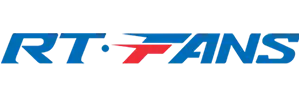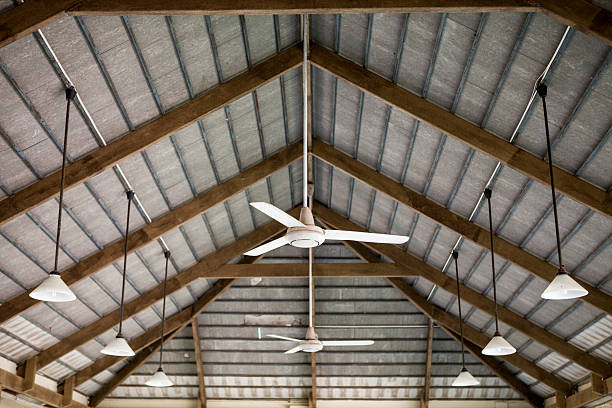
Barns play an important role in the livestock farming business and heat stress can cause serious financial losses in terms of low productivity and health problems. As energy prices rise and the pressure to be sustainable mounts, farmers should consider cooling alternatives with care. Indeed, industrial ceiling fans (HVLS fans, in particular) are a good investment in barns, since they can save on cooling costs, enhance livestock productivity, avoid heat-induced losses, and provide a positive break-even. These fans save significant amounts of money with 20-30 percent energy savings, increased animal health, and a payback period of 6 months to 2 years. We can continue with first costs, energy savings, animal effects, benefits indirect, ROI estimation, and farmer, livestock manager, and agricultural investor frequently asked questions.
Initial Costs vs Long-Term Savings
A financial commitment is important when it comes to assessing the options to cool down the barn.
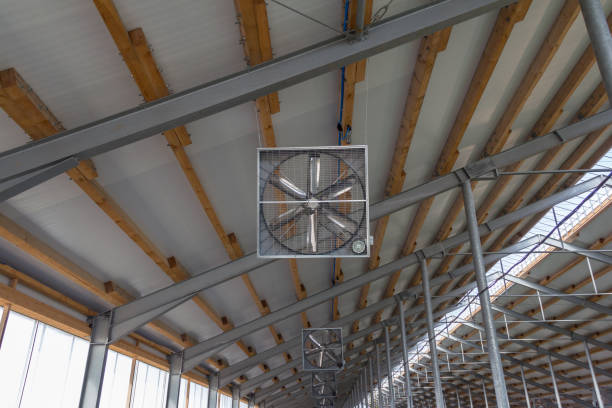
Installation Cost of HVLS Fans vs Traditional Fans or HVAC
The HVLS fans are 8-24 feet in diameter and are priced between $5,000 and 15,000 each, including installations on high roofs in barns (20-40 feet). A 20,000-square-foot dairy barn would cost 2-4 fans between 10,000 and 60,000. Old fashioned high-speed fans cost 200 to 500 apiece and need 10 or 20 to cover, which costs 2,000 to 10,000 in all plus wiring, but they deliver limited airflow.
Barn HVAC systems may range over $50,000-200,000 in cost including ductwork and electrical upgrades, and increased complexity. HVLS fans are cheaper to purchase initially and install and cost half as much to install than HVAC.
Lifespan of Ceiling Fans vs Frequent HVAC Servicing
Sealed motors and durable aluminum blades ensure an HVLS fan has a 15-20 year operating life with minimal maintenance such as cleaning the blade yearly (about 200-500/year). Traditional fans have a life span of 5-10 years, and often require repairs due to dust and moisture. HVACs have a life of 10-15 years with one annual service (2000-5000) and refrigerant maintenance and replacement. HVLS fans cost less in maintenance than HVAC by more than 10 years.
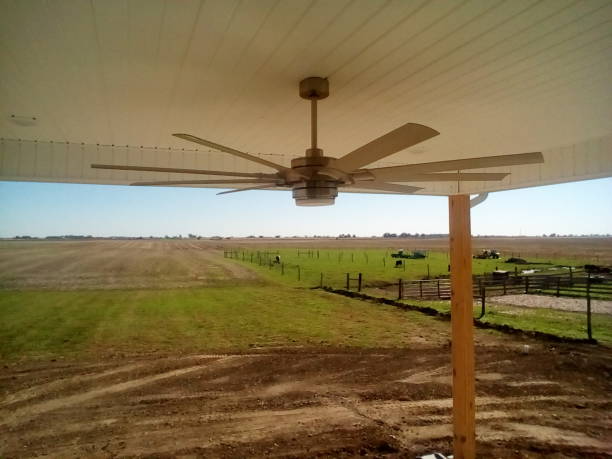
Energy Efficiency and Cost Reduction
Energy efficiency is a primary motivator of barn ROI because 20-40% of farm utility bills can be covered by cooling.
Up to 20–30% Reduction in Cooling Energy Demand
HVLS fans conserve energy by destratifying air, which is warm air in the ceiling mixed with cold air on the floor. During summer they produce a wind-chill effect that reduces apparent temperatures by 5-10 degrees Fahrenheit, enabling HVAC thermostats to be set at higher temperatures (3-5 degrees Fahrenheit higher) and use 4 percent less energy each degree. During winter, the fans recycle hot air, which reduces the cost of heating by 20-30. According to industry standards, HVLS fans use 40 percent less energy than conventional fans to cover the same area.
A 20,000-square-foot in the barn with annual cooling expenses of 10,000 dollars will save 2,000-3,000 dollars annually (20-30 percent) using HVLS fans.
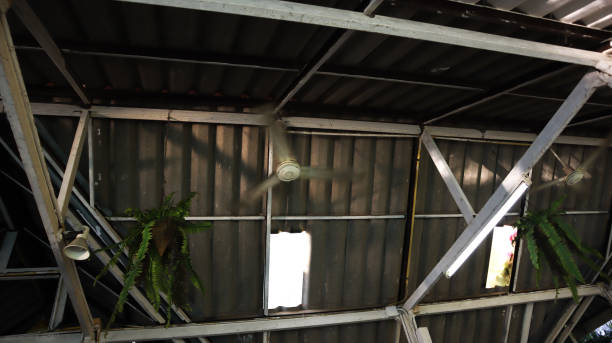
Lower Monthly Energy Bills for Barns
Savings in a month again depend on the size of the barn and the climate. HVLS fans can save HVAC bill money, up to $200-500, within a dairy barn because they reduce the amount of time the HVAC is used. A Midwestern farm saved 25% of money (three thousand dollars per year) and installed four HVLS fans.
Livestock Productivity Impact
Ventilation leads to heat stress due to poor ventilation hence low productivity- HVLS fan will solve this problem.
Dairy Cows: Heat Stress Reduction Leads to Higher Milk Yield
Heat stress causes a 10-25 percent decrease in milk production in dairy cows, and feed consumption decreases by 3-5 percent per degree of temperature over 68 degrees Fahrenheit (20 degrees Celsius). Research indicates that daily yield losses are 6.8-10% after extreme stress, and as much as 1,000 pounds/lactation. HVLS fans reduce the temperature in the barns and increase yield by 2-5 pounds per cow per day. This will increase the annual revenue of a herd by 100 cows by $10,000-20,000.

Poultry: Lower Mortality and Better Weight Gain
Heat stress in poultry barns causes mortality of 5-10 percent and weight gain of 15-32.6 percent. There is a reduction in growth through a decrease in feed intake. HVLS fans enhance the quality of airflow, reducing death rates by 5 percent and increasing feed ratio, which saves $5,000 15,000 per flock.
Beef Cattle: Improved Feed Conversion Efficiency
Heat stress reduces beef cattle feed conversion by 10-20% reducing weight gain and efficiency. HVLS fans increase comfort, adding to conversion and costing $5,000-10,000 each 100-head herd.
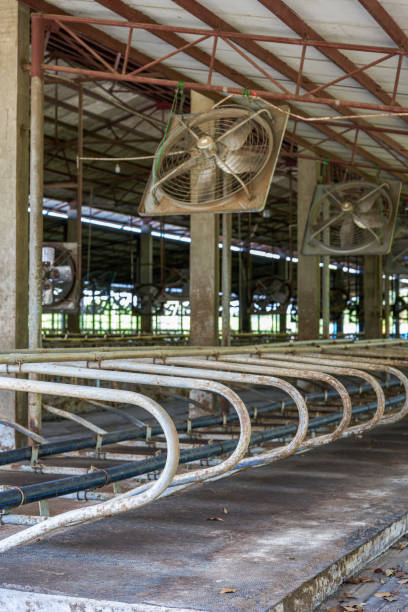
Indirect Financial Benefits
In addition to direct savings, HVLS fans have other benefits to the economy.
Reduced Veterinary Costs
Humidity and dust cause diseases, which are more expensive to treat with poor airflow (10-20). HVLS fans save respiratory problems with 10-15% of humidity cutting and help to save between 2,000 and 5,000 health expenditures a year.
Better Worker Comfort
Farm workers tend to have 10-15% more absenteeism due to heat stress. HVLS fans enhance morale, lessening turnover and increasing efficiency by 15 percent saving between $5,000 and $10,000 in labor expenses.
Protection of Stored Feed and Barn Structure
Poor airflow leads to high humidity that results in feed spoilage (5-10% losses) and corrosion in the barn. Lower humidity is achieved by fans that save $3,000-8,000 each year in feed and maintenance.
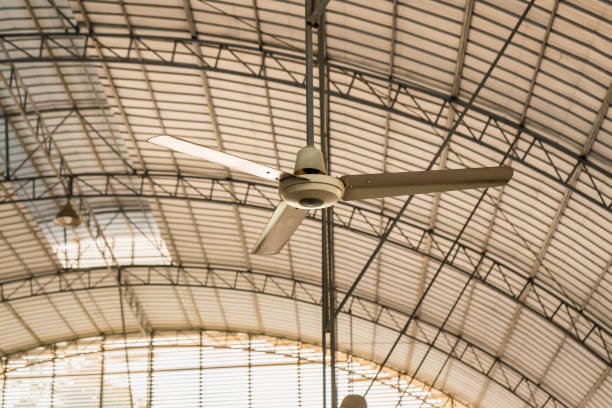
ROI Calculation & Payback Period
HVLS fans will provide good ROI to barns. A 20,000-square-foot barn installation would cost between 20000 and 40000 dollars (2-4 fans). Energy savings per year: $3,000-6,000 in energy savings + productivity savings = 10000-20,000 savings + indirect benefits savings = 5000-10,000 savings = 18,000-36,000 savings. Payback time: 6-2 years.
Example Scenario A 100-cow dairy barn spends money on three HVLS fans at a total of 30,000. Savings per year: $4,000 energy and $15,000 milk yield plus $5,000 health = 24 000. Breakeven in 15 months with a continuous saving of 240,000 over 10 years.
FAQ: Common Questions About Ceiling Fans in Barns
- How quickly do ceiling fans pay for themselves in barns?
The payback period is 6 months to 2 years, and 20-30% energy saved and productivity increased results in annual returns of $18,000-36,000. - Do ceiling fans work in both hot and cold seasons?
Yes HVLS fans cool in summer through wind-chill and destratify in winter to recycle warm air, thus saving up to 20-30 in heating costs. - Can fans alone prevent heat stress losses?
Although successful, fans contribute to 10-25% loss reduction in milk output or mortality, although used in combination with shade or misters. - What’s the air quality impact of barn fans?
Fans dilute dust and fumes that enhance air quality and mitigate respiratory problems, which is beneficial to the economy of livestock fans.
Conclusion
Heat stress and high energy bills in barns are a challenge, and HVLS fans are worth the investment, since they save 20-30% in energy costs and increase livestock production. Barn operators and farmers must consider industrial ceiling fans as an established and cost-efficient investment that can save energy and improve the health of animals and farm profitability. RTFANS represents 20 years of experience in providing customized HVLS solutions. Reach out to us today to find your ROI and improve your barn, your livestock and bottom line are worth it.
